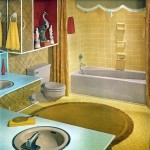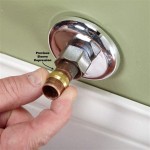Why Does My Cat Want To Be In The Bathroom With Me?
The seemingly ubiquitous feline fascination with human bathroom activities is a common observation among cat owners. While it might appear perplexing, there are several rational explanations behind this behavior. Understanding these reasons requires considering a cat's inherent instincts, environmental factors within the bathroom, and the dynamics of the human-animal bond.
Scent and Territory Marking
One primary reason cats are drawn to the bathroom is related to scent marking and territorial security. Cats possess a highly developed sense of smell, far surpassing that of humans. They use scent marking as a crucial method of communication and establishing their territory. The bathroom, being a place where humans regularly deposit strong-smelling substances (soaps, shampoos, perfumes, and bodily waste), becomes a concentrated zone of human scent.
When a cat enters the bathroom with its owner, it is essentially reinforcing its territorial claim on that human and the immediate environment. Cats have scent glands located on their cheeks, paws, and flanks. By rubbing against objects, walls, or even their owner's legs in the bathroom, they are depositing their own scent and masking the strong human odors. This behavior serves to create a familiar and reassuring environment for the cat. The presence of other scents, particularly those of cleaning products which can appear foreign and threatening, can further motivate a cat to intensify its scent marking efforts within the bathroom.
Additionally, the toilet bowl itself presents a significant olfactory marker. The act of eliminating waste is a potent form of territorial communication for cats. While they may not be directly marking the toilet itself (though some cats do drink from the toilet bowl, a behavior that can present health risks), the bathroom becomes associated with the human's scent and, therefore, a location that requires consistent surveillance and scent reinforcement by the cat.
Resource Security and Attention Seeking
Beyond scent marking, the bathroom can represent a zone of resource control for a cat. This is particularly true in multi-cat households, where competition for resources (food, water, attention, safe resting spaces) can be heightened. The bathroom, even if seemingly unappealing to humans, can provide a temporary sanctuary from other animals within the home.
When a human enters the bathroom and closes the door, the cat may perceive this as an opportunity to monopolize the human's attention and potentially gain access to a limited resource, namely, the human's presence and interaction. The cat might meow, scratch at the door, or attempt to squeeze through any available opening to join its owner. This behavior can be particularly prevalent if the cat feels neglected or if its daily routine has been disrupted. The act of following its owner into the bathroom becomes a way to re-establish connection and ensure its needs are being met.
Furthermore, some cats learn to associate the bathroom with positive reinforcement. If a cat consistently receives attention, petting, or even treats while its owner is in the bathroom, it will quickly learn to associate that location with a rewarding experience. This positive association then motivates the cat to seek out the bathroom experience repeatedly. Even negative attention, such as being scolded or pushed away, can inadvertently reinforce the behavior, as the cat is still receiving attention in some form.
Environmental Factors and Curiosity
The physical environment of the bathroom itself can be surprisingly appealing to cats. The cool, smooth surfaces of sinks, bathtubs, and tile floors can offer a welcome respite, especially during warmer months. These surfaces provide a comfortable place for the cat to groom itself or simply relax. The echoes and acoustics within a tiled bathroom also can be intriguing to a cat's sensitive hearing.
Running water is another significant draw for many cats. The sound and movement of water from the faucet or shower can stimulate a cat's hunting instincts and provide a source of entertainment. Some cats are fascinated by dripping faucets and may even attempt to catch the water droplets. Additionally, the toilet bowl itself, as previously noted, can become a source of fascination, though allowing a cat to drink from the toilet bowl is discouraged due to potential contamination risks.
The bathroom also provides a novel environment with a variety of interesting objects and textures. Toilet paper rolls, bath mats, shower curtains, and even cleaning supplies can pique a cat's curiosity. These items offer opportunities for play, exploration, and even destruction. While some cats may simply be curious about these items, others may exhibit more destructive behavior, such as shredding toilet paper or swatting at hanging objects. This exploration is a natural part of a cat's inquisitive nature and contributes to its overall environmental enrichment.
The small, enclosed nature of the bathroom can also appeal to a cat's instinct to seek out secure and confined spaces. Cats often feel most comfortable in enclosed areas where they can observe their surroundings without feeling vulnerable. The bathroom, with its defined boundaries and limited access points, can provide a sense of security and control for a cat. This is particularly true for shy or anxious cats, who may seek out the bathroom as a safe haven when feeling overwhelmed.
The temperature changes associated with showering or bathing can also attract cats. The increased humidity and warmth create a temporarily different climate within the bathroom, which some cats find appealing, especially during colder months. They may seek out the warm air and humid atmosphere to help regulate their body temperature and alleviate discomfort from dry skin.
In summary, a cat's desire to be in the bathroom with its owner is rarely a random occurrence. It is typically a combination of factors, including scent marking, resource security, attention seeking, environmental appeal, and the inherent curiosity of the feline species. Understanding these motivations can help owners better interpret their cat's behavior and provide appropriate enrichment and attention to meet their needs. Addressing any underlying anxieties or resource competition within the household can also help mitigate the behavior if it becomes problematic.

Why Does My Cat Follow Me To The Bathroom Cats Com
:strip_icc()/cats-in-the-bathroom-554029-hero-3d3735d295614a38bad346da9edac558.jpg?strip=all)
7 Reasons Why Cats Love Bathrooms

Why Does My Cat Follow Me To The Bathroom Cats Com
:strip_icc()/cats-in-the-bathroom-554029-03-b030cec7a3a74ee994a4a18a8f386c6b.jpg?strip=all)
7 Reasons Why Cats Love Bathrooms

Why Does My Cat Guard Me When I Go To The Bathroom Cats Com

No Really Why Do Cats Follow You Into The Bathroom

Why Does My Cat Follow Me Into The Bathroom

No Really Why Do Cats Follow You Into The Bathroom

Why Do Cats Follow You To The Bathroom We Asked Scientists
:strip_icc()/cats-in-the-bathroom-554029-04-0315e4f518e548aab427bd7d382e70df.jpg?strip=all)
7 Reasons Why Cats Love Bathrooms
Related Posts







